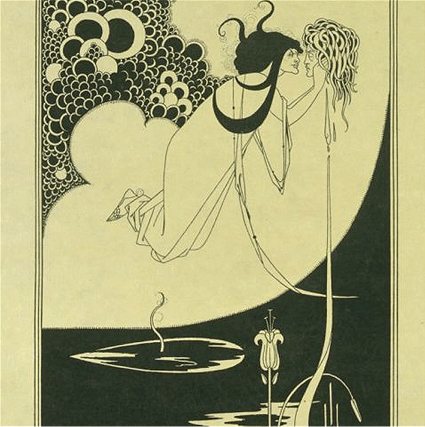“The Cult of Beauty” at the V & A. By Andrew Graham-Dixon.
James McNeill Whistler’s White Girl, vestal virgin in a mid-nineteenth-century drawing room, stands and stares solemnly into the middle distance. White dress, white draperies, white flowers; she is part of a Symphony in White, as the artist expressed it in his full title for the picture, predicting his fellow aesthete Walter Pater’s assertion that “All art aspires to the condition of music” – ineffable, mysterious, exquisite. Only the jaundiced yellow polar bear rug on which this blank-eyed priestess stands strikes a discordant note. The animal might be dead but still it snarls, eyes wide open and fangs bared, as if perpetually outraged by its terrible fate: domestication within a fashionably aesthetic interior.
Whistler’s painting hangs in the opening section of the V & A’s seductive new exhibition on the subject of Victorian aestheticism and art-for-art’s-sakery, “The Cult of Beauty”, for which it is an apt emblem: an image of apparent imperturbability, shadowed by suggestions of roiling passion and a profound sense of unease. The subtitle of the V & A’s show is “The Aesthetic Movement 1860-1900”, which itself suggests the intriguing slipperiness of its essential theme. The first writer to identify the phenomenon was Walter Hamilton, whose The Aesthetic Movement in England was published in 1882. But as Hamilton himself conceded, it was never really a movement in the sense of a cohesive group with a jointly agreed manifesto. It might better be described as a collection of impulses and ideas, connected to certain notions of beauty, shared to differing degrees by a constantly shifting cast of characters whose interests and activities ranged broadly across all of the fine and applied arts, as well as literature. The centres of Victorian aestheticism, such as they were, lay in the...


